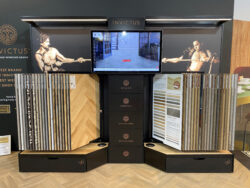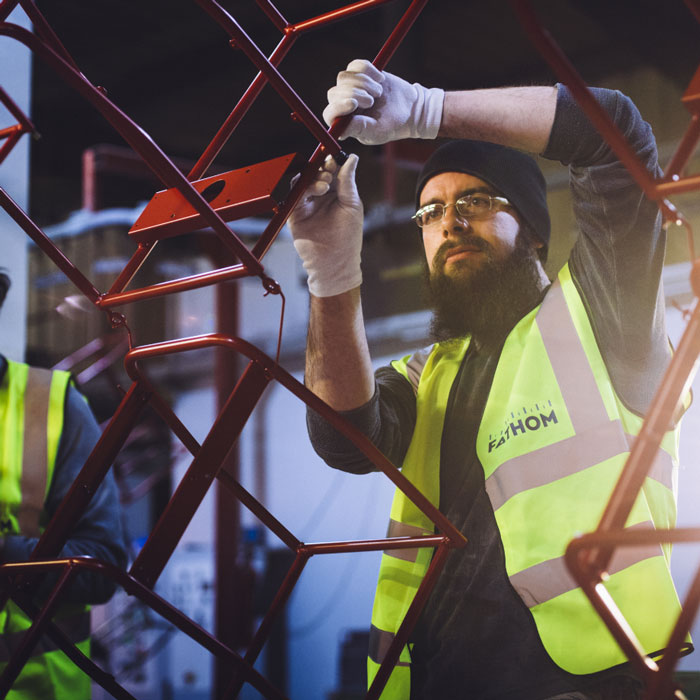How to create a stand-out retail display
Retail Display
Every bricks-and-mortar store in existence has some form of retail display, whether it’s simple shelving or an all-singing, all-dancing interactive installation. Put simply, it can be defined is any physical structure or space used to promote and sell merchandise in a retail environment. The sole aim is to attract the attention of consumers and encourage sales.
If you’re a retailer or store owner looking to take your in-store infrastructure from uninspiring and ineffectual to engaging and invaluable, you’re in the right place. Read on to find out why you should be investing in your retail display and how you can make this fundamental part of the retail mix make more money for your business.


Why do you need to invest in retail display?
In the ever-evolving retail landscape, where consumers have abundance of choice, it is essential for bricks-and-mortar stores to invest in retail display that stands out. And by that, we don’t just mean an impressive arrangement of products on a shelf, we mean an immersive and engaging shopping experience that has a direct impact on sales.
While it might feel like ecommerce is taking over, 75% of retail sales are still made in physical stores, while hybrid shopping is increasingly popular. Physical stores are arguably more relevant in the omnichannel retail mix than ever, providing the space in which many consumers still want to close the deal. Your retail display can make or break that decision.
Where should you begin when designing your retail display?
Your retail display needs to cut through the noise, educating consumers on your products and convincing them to take that final step in parting with their cash. It might sound obvious, but the key is to know your customer. How do they behave within your store? What are their needs? How can you demonstrate that your product meets those needs?
Retailers who keep these questions in mind in the design and manufacture of their in-store installations will reap the benefits in terms of attracting consumers, retaining attention and ultimately converting that interest into a sale. If your store environment doesn’t fit with your target customer’s psychographics, you’re fighting a losing battle.
How can I make my retail display stand out from the crowd?
There are a few hard and fast rules to making your retail display stand out in a crowded marketplace and ensuring that it fulfils its role within your brand’s overall customer experience strategy. Here are ten tips and tactics to follow:
- Clear and concise messaging
A stand-out retail display starts with clear and concise messaging. Shoppers are often time-poor and attention spans are increasingly short, so immediacy is key. Anything too complicated or difficult to quickly comprehend and your potential customer will lose interest and drift away. Your display should tell them what the product is, what it does and why they need it, all within minutes.
- Brand consistency
Ensure that your retail display is instantly recognisable in terms of your brand aesthetic and is in keeping with all other marketing collateral. Remember your physical store is just one part of the customer experience. More than half of customers engage with three to five channels during each purchasing journey, so the transition must be as seamless as possible.
- Customer interaction
Engaging with consumers through physical demonstration is a powerful tool. Allowing people to see, touch and interact with a product increases the likelihood of them making a purchase. This is a unique experience that cannot be replicated online, giving a valuable service to in-store customers and improving their overall shopping experience.
- Eye-Catching Design
The design of your retail display should be eye-catching and attention-grabbing. It should draw customers in and make them want to explore the products further. Clever use of colours, unique shapes and interesting textures can all help to create a visually striking display. Additionally, incorporating lighting can help to highlight certain products and create a sense of drama and excitement.
- Strategic Product Placement
As mentioned, effective retail display involves much more than arranging products on a shelf, but strategic product placement is essential. This means displaying items in a way that makes them easy to see and access, showcasing hero products or highlighting special pricing to draw attention. It also allows opportunity for crossover sales by integrating complementary products.
- In-store Location
Use your retail display to elevate your overall store design. It can work to optimise your store layout, slowing customers down on their journey and encouraging specific routes to entice them to view more products. Build focal points and hot spots, for example an arresting display at your store entrance to make an immediate impact and draw people in to explore further.
- Props and Signage
Props and signage help to bring a retail display to life and make it more engaging for customers. Props such as mannequins, product testers, and product samples can give customers a better idea of how the products will look or feel. Meanwhile, signage can be used to highlight promotions, provide product information and guide customers through the display.
- Integrate technology
Embracing and integrating technology into your retail display can significantly enhance customer experience and increase their propensity to purchase. This can range from simple screens that guide consumers through your product features to larger-scale installations, such as interactive games and virtual try-on areas.
- Good maintenance
Appearance is everything and it’s vital that you keep your retail display in good condition and proper working order. If it’s poorly maintained, you risk losing your customers’ confidence in the product itself. Choose materials that are hard-wearing and able to withstand the wear and tear of your store’s footfall, and ensure you keep it looking at its best.
- Future proofing
Sustainability is not just a buzzword. It’s important that you consider the end of your retail display’s life when you’re in the early stages of planning. Can it be built in a way that means it can be reconfigured in future? Can it be manufactured in a way that smaller parts are easily replaced? Every little helps when it comes to longevity of displays.
Where do I go from here?
It might sound like there’s a lot to consider in order to make your retail display stand out, and that’s because there is. It needs to be clear and concise yet demonstrate your often-complicated products in the most appealing way. It needs to be eye-catching but not overwhelming. It must be interactive yet able to withstand wear and tear. It must sit perfectly within your current store environment yet last within an ever-changing market.
The good news is that Fathom can help. We create thoughtfully designed retail displays that provide an immersive and engaging shopping experience for your customers and increase your sales in the process. We offer a complete service from concept to production, whether it’s for a national roll-out, an individual store or a one-off immersive experience. Get in touch to find our more.

